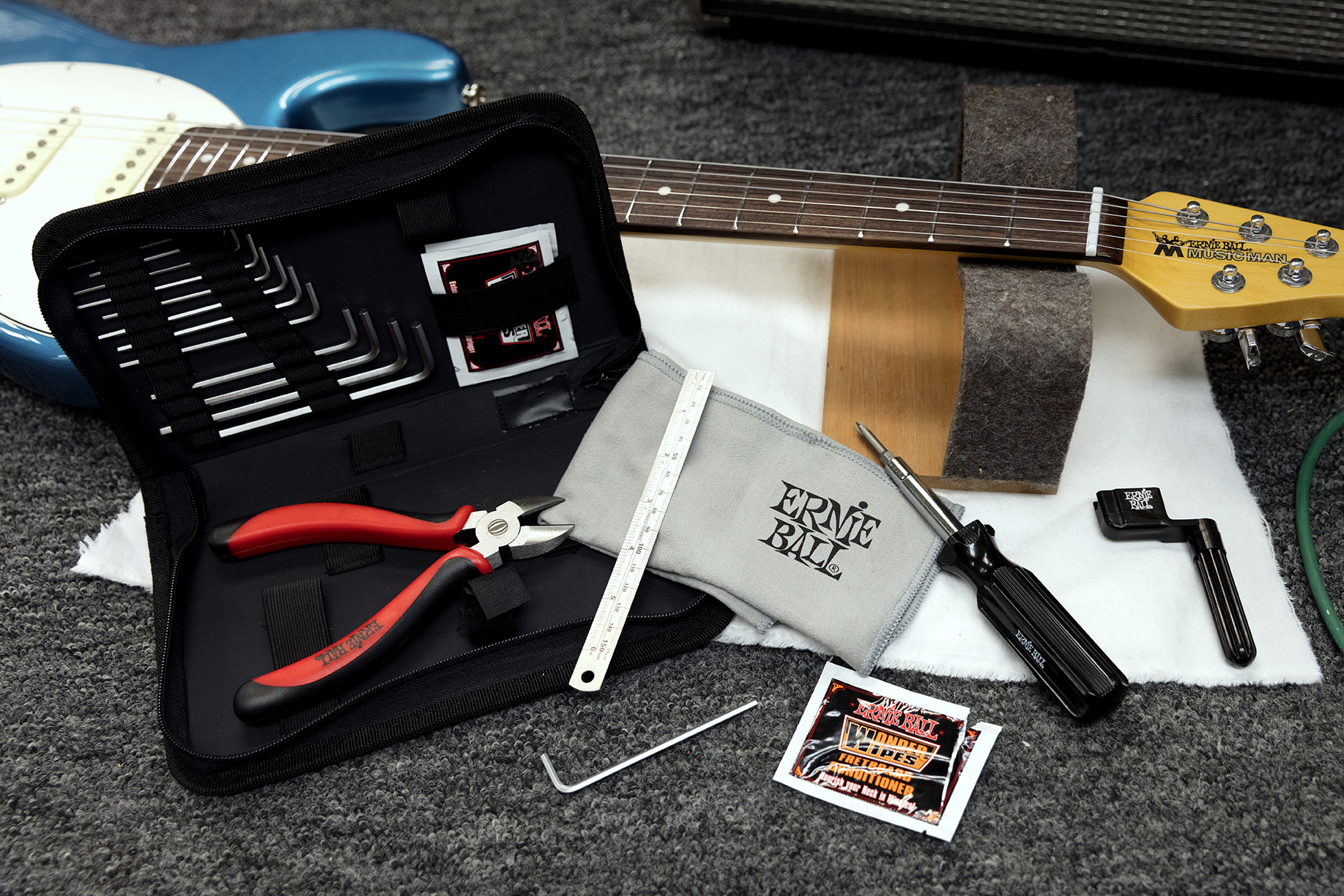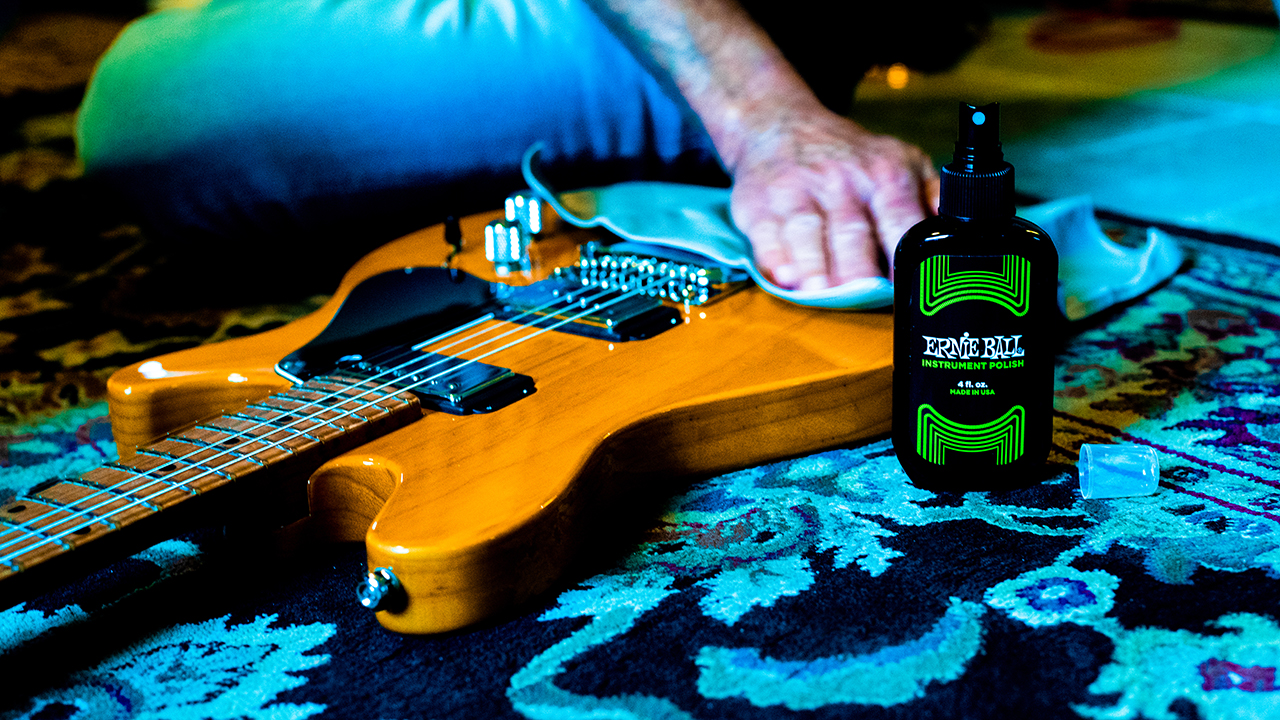Guitars and basses are just like anything else when it comes to maintenance; cars, homes, even your own body needs regular maintenance in order to operate at its peak ability.
That said, it’s all too common for instrument owners to allow their guitars and basses to fall into a state of disrepair. Not only does this leave the instrument in a condition that is unpleasant to play, but it can also have a permanent impact on its overall condition.
Because this is such an important aspect of instrument ownership, we’ve put together this guide to help you address some of the most important aspects of keeping your guitar or bass in tip top shape. We’ve also included links to some helpful tools that will enable you to get the job done quickly and easily!
#1: String Changing
Although we just introduced the most durable guitar strings known to man, no strings can last forever. It’s important to know when to change your strings to maintain optimal tone and feel from your instrument.
String change frequency depends on a number of factors, including how often you play, your style of playing, the environment in which the instrument stored, etc. A musician who gigs every day, plays hard and subjects their guitar or bass to lots of temperature or humidity changes will need to change their strings more frequently than a weekend warrior who strums a bit at home every other weekend.
Our new VPJR Tuner is the perfect combination 2-1 pedal with a precise, fast and accurate chromatic tuner that is visually attractive and easy to operate. The VPJR Tuner can also be calibrated to a variety of ideal reference pitches. Also, the CradleTune tripod neck cradle with detachable clip-on tuner and PowerPeg motorized string winder both help to make changing strings and tuning up a snap.

#2: Cleaning
It’s the story of your life: your parents, your roommate, your significant other, they’ve always nagged you to clean up after yourself. Here’s the thing – they were right. Particularly when it comes to instrument care, simple cleaning has a significant impact on how your guitar or bass sounds, feels and looks.
If the body of your instrument needs cleaning, it can have an impact on more than just looks. A dirty guitar or bass can create more grip on your fretting hand and your picking forearm, hindering you from moving freely and playing cleanly. It doesn’t hurt that a freshly polished instrument looks fantastic under stage lights!
If you’ve ever tried to play an instrument with dirty strings, you already know it’s not entirely pleasant. Aside from feeling slow and clunky, the tone that normally rings out is deadened and soft. Using string cleaner regularly will help to avoid buildup from accumulating and keep your strings nice and bright.
Your instrument’s fretboard is also particularly susceptible to changes in temperature, humidity and light. Using fretboard conditioner regularly helps to keep it from drying out and/or warping.
The good news is, if you stay on top of it, keeping your instrument clean isn’t difficult at all. We offer a number of different handy products that help to make caring for your guitar or bass easy and enjoyable.
- Microfiber Polish Cloths
- Guitar Polish Spray
- Wonder Wipes – Pre-soaked towelettes with either instrument polish, string cleaner or fretboard conditioner.

#3: Truss Rod and Intonation Adjustments
We’ve all been there: you’re all tuned up and ready to play, until you get up to the higher frets and notice that your notes sound just a tiny bit off. It’s likely that your instrument needs a truss rod or saddle intonation adjustment.
Adjusting the truss rod changes the angle of your instrument’s neck. Pick up your instrument and look from the headstock down the strings toward the bridge. Each string should be at a consistent height from the frets all the way down. If the neck is bowed in or out, you can change this by adjusting the truss rod, conveniently located on Ernie Ball Music Man instruments between the fretboard and the neck pickup.
Adjusting the individual bridge saddles changes the height, or action, of each individual string. There are a number of reasons to change the action on your instrument. Players who want to shred the neck and have a relatively light touch tend to gravitate toward lower action, whereas players who use many steep bends or play slide guitar will tend toward higher action. Whichever way you prefer, it should be even across all of the strings.
Our Musician’s Tool Kit has everything you need to take care of this sort of maintenance. A six-in-one screwdriver, hex wrench set, string height ruler, heavy duty string cutter and more will have you on your way to becoming your own guitar tech before you know it!




That’s great info. I’m still learning the ropes an a hobbiest builder